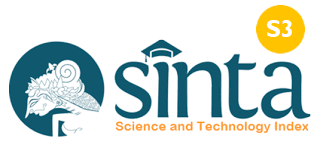Survei Kepuasan Siswa Terhadap Proses Belajar Daring Selama Pandemi Covid-19
Keywords:
Satisfaction Survey, Online Learning ProcessAbstract
This study aims to determine the level of student satisfaction online learning during the Covid-19 Pandemic. By knowing the level of student satisfaction online learning is expected, educational staff can change the online teaching and learning system for the better. The data collection method used in this study was a questionnaire method (by distributing a number of questions to be answered). The dissemination of this questionnaire was carried out online using the google form application. The instrument for measuring the level of student satisfaction consisted of a total of 20 statements, with specifications of 5 questions regarding the facilities and infrastructure supporting the implementation of online learning, 5 questions regarding teacher ivonation in designing learning, 5 questions about attitudes and responses (discussion activities in the online learning process), 5 guarantees / treat students (service). The value of the statements in this questionnaire instrument consists of statements on a scale of 1 - 5. The value of scale 1 is the lowest value in the range of satisfaction values, meaning that the respondent is very dissatisfied with the statement on the questionnaire. Meanwhile, the highest score is 5, meaning that the respondent is very satisfied with the services provided. In terms of facilities and infrastructure supporting the implementation of online learning, 20% are very dissatisfied, 70% are dissatisfied, 10% are quite satisfied. As many as 65% are quite satisfied, 20% are satisfied, 15% are very satisfied with the teacher's involvement in designing learning. Respondents rated the attitude and response (discussion activities in the online learning process) as satisfactory as shown by the results of questionnaire 10% very satisfied, 15% satisfied, 50% quite satisfied, 20% dissatisfied and 5% very dissatisfied. In terms of guarantees / treatment to students (services), 20% are dissatisfied, 45% are quite satisfied, 20% are satisfied, 15% are very satisfied.
References
Fadli, Rizal. (2020). Coronavirus. Diakses dari https://www.halodoc.com/kesehatan/coronavirus pada tanggal 11 Juni 2020
Purwanto. (2013). Evaluasi hasil belajar. Yogyakarta: Pustaka Pelajar.
Sadirman. (2005). Interkasi Dan Motivasi Belajar Mengajar. Jakarta: Raja Grafindo Persada.
Surya, M. (2004). Psikologi: Pembelajaran Dan Pengajaran. Bandung: Pustaka Bani Quraisy.
Sanjaya, Wina. (2014). Strategi Pembelajaran Berorientasi Standar Proses Pendidikan. Jakarta: Kencana Pranadamedia Group
Downloads
Published
How to Cite
Issue
Section
License
An author who publishes in the Cetta : Jurnal Ilmu Pendidikan agrees to the following terms:
- Author retains the copyright and grants the journal the right of first publication of the work simultaneously licensed under the Creative Commons Attribution-ShareAlike 4.0 License that allows others to share the work with an acknowledgement of the work's authorship and initial publication in this journal
- Author is able to enter into separate, additional contractual arrangements for the non-exclusive distribution of the journal's published version of the work (e.g., post it to an institutional repository or publish it in a book) with the acknowledgement of its initial publication in this journal.
- Author is permitted and encouraged to post his/her work online (e.g., in institutional repositories or on their website) prior to and during the submission process, as it can lead to productive exchanges, as well as earlier and greater citation of the published work (See The Effect of Open Access).
Read more about the Creative Commons Attribution-ShareAlike 4.0 Licence here: https://creativecommons.org/licenses/by-sa/4.0/.





